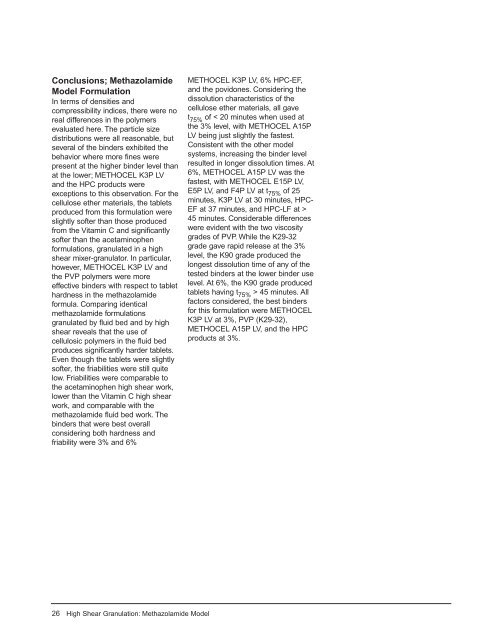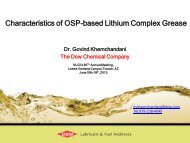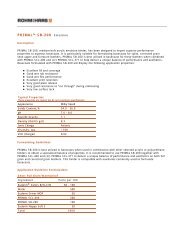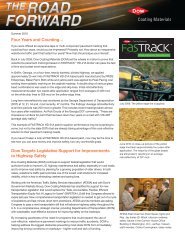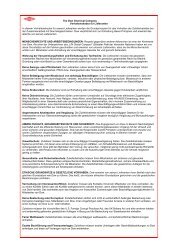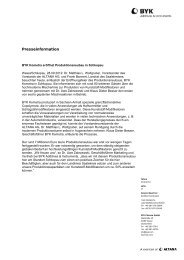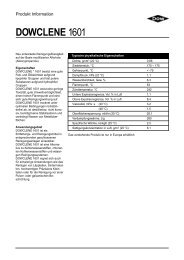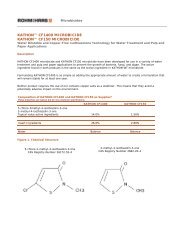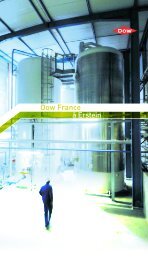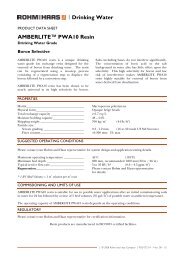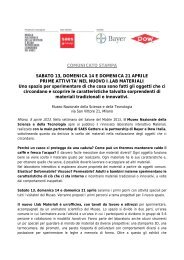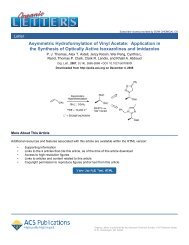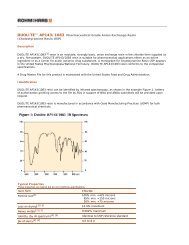Granulation with Dow Cellulosic Polymers II. High Shear Granulation
Granulation with Dow Cellulosic Polymers II. High Shear Granulation
Granulation with Dow Cellulosic Polymers II. High Shear Granulation
You also want an ePaper? Increase the reach of your titles
YUMPU automatically turns print PDFs into web optimized ePapers that Google loves.
Conclusions; Methazolamide<br />
Model Formulation<br />
In terms of densities and<br />
compressibility indices, there were no<br />
real differences in the polymers<br />
evaluated here. The particle size<br />
distributions were all reasonable, but<br />
several of the binders exhibited the<br />
behavior where more fines were<br />
present at the higher binder level than<br />
at the lower; METHOCEL K3P LV<br />
and the HPC products were<br />
exceptions to this observation. For the<br />
cellulose ether materials, the tablets<br />
produced from this formulation were<br />
slightly softer than those produced<br />
from the Vitamin C and significantly<br />
softer than the acetaminophen<br />
formulations, granulated in a high<br />
shear mixer-granulator. In particular,<br />
however, METHOCEL K3P LV and<br />
the PVP polymers were more<br />
effective binders <strong>with</strong> respect to tablet<br />
hardness in the methazolamide<br />
formula. Comparing identical<br />
methazolamide formulations<br />
granulated by fluid bed and by high<br />
shear reveals that the use of<br />
cellulosic polymers in the fluid bed<br />
produces significantly harder tablets.<br />
Even though the tablets were slightly<br />
softer, the friabilities were still quite<br />
low. Friabilities were comparable to<br />
the acetaminophen high shear work,<br />
lower than the Vitamin C high shear<br />
work, and comparable <strong>with</strong> the<br />
methazolamide fluid bed work. The<br />
binders that were best overall<br />
considering both hardness and<br />
friability were 3% and 6%<br />
26 <strong>High</strong> <strong>Shear</strong> <strong>Granulation</strong>: Methazolamide Model<br />
METHOCEL K3P LV, 6% HPC-EF,<br />
and the povidones. Considering the<br />
dissolution characteristics of the<br />
cellulose ether materials, all gave<br />
t 75% of < 20 minutes when used at<br />
the 3% level, <strong>with</strong> METHOCEL A15P<br />
LV being just slightly the fastest.<br />
Consistent <strong>with</strong> the other model<br />
systems, increasing the binder level<br />
resulted in longer dissolution times. At<br />
6%, METHOCEL A15P LV was the<br />
fastest, <strong>with</strong> METHOCEL E15P LV,<br />
E5P LV, and F4P LV at t 75% of 25<br />
minutes, K3P LV at 30 minutes, HPC-<br />
EF at 37 minutes, and HPC-LF at ><br />
45 minutes. Considerable differences<br />
were evident <strong>with</strong> the two viscosity<br />
grades of PVP. While the K29-32<br />
grade gave rapid release at the 3%<br />
level, the K90 grade produced the<br />
longest dissolution time of any of the<br />
tested binders at the lower binder use<br />
level. At 6%, the K90 grade produced<br />
tablets having t 75% > 45 minutes. All<br />
factors considered, the best binders<br />
for this formulation were METHOCEL<br />
K3P LV at 3%, PVP (K29-32),<br />
METHOCEL A15P LV, and the HPC<br />
products at 3%.


